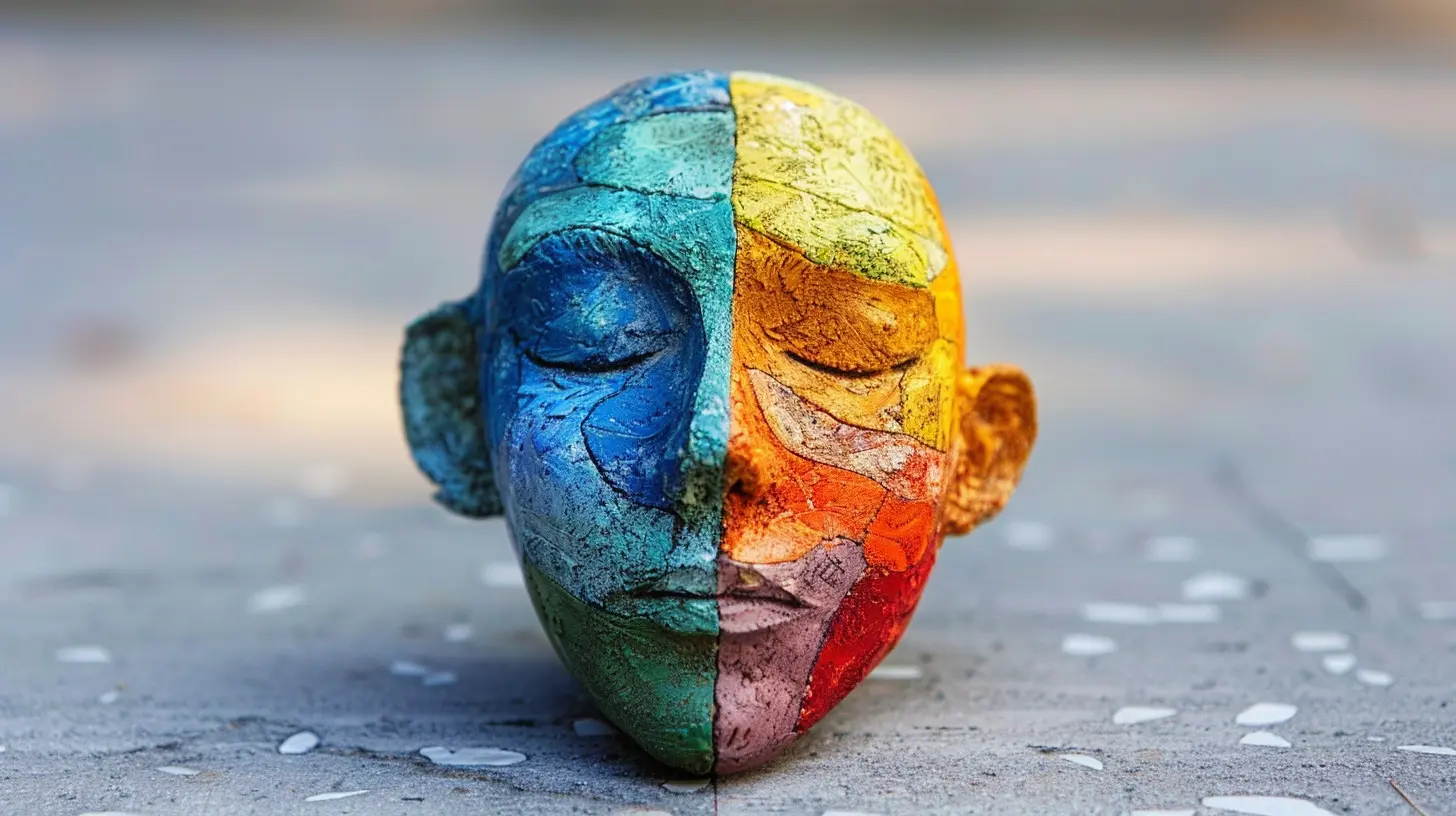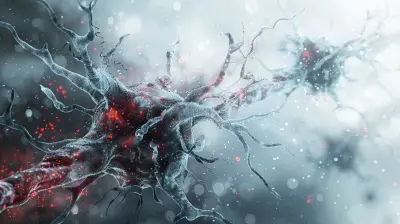Navigating the Complexities of Bipolar Disorder
17 August 2025
Bipolar disorder isn't just about mood swings—it's a rollercoaster of emotions, energy levels, and thoughts that can be overwhelming for those who experience it. One moment, you're on top of the world, feeling invincible. The next, you're drowning in despair, unable to find a way out. It's a condition that affects not just the individual but also their relationships, work, and overall quality of life.
So, how do you navigate something this complex? Let’s dive deep into the nuances of bipolar disorder—what it is, how it impacts daily life, and what can be done to manage it effectively.

Understanding Bipolar Disorder
Bipolar disorder is a mental health condition that causes extreme mood swings. These swings include emotional highs (mania or hypomania) and lows (depression). It’s not just about "good days" and "bad days"—it's about drastic shifts that can last for weeks or even months.The Different Types of Bipolar Disorder
Not all cases of bipolar disorder are the same. In fact, it comes in different forms:- Bipolar I Disorder: Characterized by manic episodes that last at least seven days or are severe enough to require hospitalization. Depressive episodes also occur, often lasting at least two weeks.
- Bipolar II Disorder: Involves a pattern of depressive episodes and hypomanic episodes (which are less severe than full-blown mania), but not full manic episodes.
- Cyclothymic Disorder (Cyclothymia): A milder form of bipolar disorder involving numerous periods of hypomanic symptoms and depressive symptoms that persist for at least two years.
- Other Specified and Unspecified Bipolar Disorders: When symptoms do not fit the specific criteria for the types above but still involve noticeable mood disturbances.
Each type presents its own challenges, making diagnosis and treatment an ongoing process.

The Extreme Highs: Mania and Hypomania
Mania and hypomania are what set bipolar disorder apart from major depression. But what's the difference?- Mania: During a manic episode, a person may feel euphoric, have endless energy, speak rapidly, take risks, and experience racing thoughts. Sometimes, mania leads to reckless behavior—spending sprees, impulsive decisions, or even delusions. If severe, hospitalization may be necessary.
- Hypomania: It's similar to mania but less intense. People experiencing hypomania may still be highly productive and energetic, but without the loss of reality. However, it can still lead to bad decisions and eventually spiral into depression.

The Devastating Lows: Bipolar Depression
Bipolar depression can be just as debilitating as the highs are exhilarating. It’s not just feeling “sad”—it’s full-on emotional exhaustion. Symptoms include:- Persistent sadness or emptiness
- Loss of interest in activities once enjoyed
- Fatigue and lack of energy
- Difficulty concentrating
- Feelings of hopelessness or worthlessness
- Suicidal thoughts
Unlike unipolar depression (clinical depression), bipolar depression is often harder to treat since traditional antidepressants can sometimes trigger manic episodes.

The Challenges of Diagnosis
One of the trickiest parts of bipolar disorder is getting the right diagnosis. Many people are initially misdiagnosed with depression because they tend to seek help when experiencing low moods but not when they’re manic or hypomanic.Another complication? It often gets mistaken for other conditions like ADHD, borderline personality disorder, or even substance abuse issues. That’s why working with a mental health professional who understands mood disorders is crucial.
The Impact on Daily Life
Living with bipolar disorder is like walking a tightrope. It influences every aspect of life, from relationships to work performance.Relationships and Social Life
Bipolar disorder can strain relationships. During manic phases, people might say or do things they later regret. During depressive phases, they might withdraw completely. Loved ones often feel like they’re constantly trying to keep up with these mood shifts, which can be exhausting.Work and Productivity
Bipolar disorder can make maintaining a job tough. One day, you might be hyper-focused and energetic, completing tasks at lightning speed. The next, you can’t even get out of bed. Managing a steady and consistent workflow can be a serious challenge without proper treatment.Sleep Disruptions
Irregular sleep patterns are common in bipolar disorder. Mania often brings sleepless nights, while depression may cause oversleeping. Inconsistent sleep can actually trigger episodes, making it both a symptom and a cause of mood instability.
Managing Bipolar Disorder: What Works?
While bipolar disorder doesn’t have a "cure," it is absolutely manageable with the right approach.Medication as a Foundation
Medication is often essential for stabilizing mood swings. Some common types include:- Mood stabilizers like lithium and valproate
- Antipsychotic medications for severe mood episodes
- Antidepressants (cautiously used) to address depressive symptoms
Medication isn't one-size-fits-all, and it often takes time to find the right combination.
Therapy for Long-Term Stability
Therapy plays a vital role in managing bipolar disorder. Some effective approaches include:- Cognitive Behavioral Therapy (CBT): Helps identify and change negative thought patterns.
- Psychoeducation: Understanding the condition helps individuals recognize triggers and early warning signs.
- Family Therapy: Helps loved ones understand how they can provide support.
Lifestyle Adjustments
Medication and therapy work best when combined with lifestyle changes. Some powerful ways to manage the condition include:- Consistent Sleep Schedule: Sticking to a routine helps stabilize mood.
- Regular Exercise: Physical activity boosts mood and reduces stress.
- Healthy Diet: Eating nutrient-rich foods can keep energy levels steady.
- Avoiding Alcohol and Drugs: Substance use can worsen episodes and interfere with medication.
- Reducing Stress: Practicing mindfulness, meditation, or relaxation techniques can be beneficial.
Building a Strong Support System
Having a solid support network can make a world of difference. Whether it's close family, friends, or support groups, knowing you're not alone in this journey can be incredibly comforting.Breaking the Stigma
Mental health stigma still exists, and bipolar disorder is widely misunderstood. People often use the term "bipolar" casually to describe moodiness, but in reality, it’s a serious condition that affects millions.Education and awareness can reduce misconceptions. The more we talk about it, the less power stigma holds. If you or someone you love has bipolar disorder, know that seeking help isn’t a sign of weakness—it’s a sign of strength.
Final Thoughts
Bipolar disorder is a challenging condition, but it’s not insurmountable. With the right combination of treatment, lifestyle adjustments, and support, individuals with bipolar disorder can lead fulfilling lives.If you or someone you know is struggling, don’t hesitate to reach out for professional help. Remember, managing bipolar disorder isn’t about "curing" it—it’s about finding balance amid the highs and lows.
all images in this post were generated using AI tools
Category:
Clinical PsychologyAuthor:

Alexandra Butler
Discussion
rate this article
1 comments
Hugo Adkins
Thank you for this insightful article! Your compassionate approach makes understanding bipolar disorder feel more accessible and supportive for everyone.
August 31, 2025 at 5:05 AM

Alexandra Butler
Thank you so much for your kind words! I'm glad you found the article helpful and supportive.


